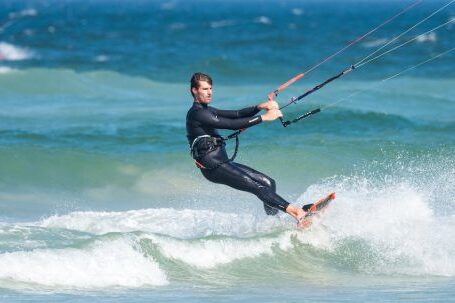Diving in low visibility conditions can be challenging and potentially dangerous. Poor visibility can greatly reduce your ability to navigate, communicate, and locate potential hazards underwater. However, with the right techniques and equipment, you can still enjoy safe and exciting dives even in less than ideal conditions. In this article, we will explore some essential tips for diving in low visibility conditions.
Choose the Right Equipment
When planning a dive in low visibility conditions, it is crucial to ensure that you have the right equipment. Start by using a high-quality dive mask that provides a wide field of vision and a snug fit. This will help you maximize your ability to see in poor visibility. Additionally, consider wearing a dive light to enhance your vision and make it easier to spot potential hazards.
Maintain Proper Buoyancy Control
Maintaining proper buoyancy control is essential when diving in low visibility conditions. It is easy to become disoriented or lose sight of your surroundings, so having good buoyancy control will help you stay in control and avoid accidentally damaging the environment or getting entangled in underwater obstacles. Practice buoyancy control techniques regularly to ensure you are comfortable and confident in any conditions.
Use a Dive Buddy and Stay Close
Diving with a buddy is always recommended, but it becomes even more important in low visibility conditions. Your dive buddy can act as your extra set of eyes and provide assistance if you encounter any difficulties. Make sure to establish and maintain close proximity with your buddy throughout the dive, using hand signals or other forms of communication to stay connected.
Employ Effective Communication
Effective communication is crucial when diving in low visibility conditions. It is important to establish clear communication signals with your dive buddy before the dive. Consider using a dive slate or underwater communication device to communicate more effectively underwater. Remember to keep communication simple, concise, and easily understandable to avoid confusion.
Focus on Navigation Techniques
Navigating underwater can be challenging in low visibility conditions. It is essential to rely on effective navigation techniques to ensure a safe dive. Before the dive, familiarize yourself with the dive site layout and any potential landmarks that can help guide you. Utilize compass navigation skills and maintain a sense of direction throughout the dive. If you feel disoriented, ascend slightly to get a better view of your surroundings before continuing.
Be Mindful of Potential Hazards
In low visibility conditions, it is crucial to be extra mindful of potential hazards. Take the time to thoroughly assess your surroundings before descending, paying attention to any underwater structures, currents, or other divers in the area. Stay clear of sharp objects, fishing lines, or other entanglement risks. By being aware and cautious, you can minimize the chances of encountering dangerous situations.
Conclusion: Dive Smart in Low Visibility
Diving in low visibility conditions requires a heightened level of awareness and preparation. By choosing the right equipment, maintaining proper buoyancy control, using a dive buddy, employing effective communication, focusing on navigation techniques, and being mindful of potential hazards, you can enjoy safe and successful dives even when visibility is limited. Remember to always prioritize safety and be prepared for the unique challenges that low visibility conditions may present. Happy diving!





